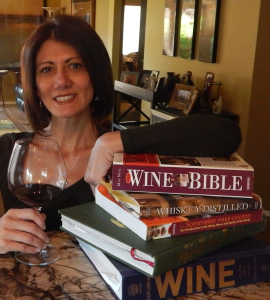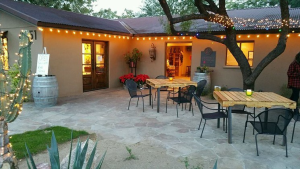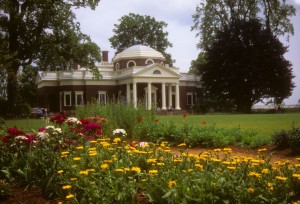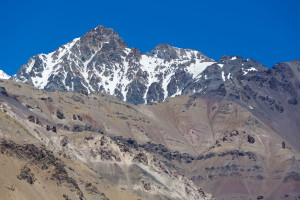Today we have a guest post from Darla Hoffmann, CSW. Darla tells us about how wine has opened up the world to her in knowledge and experiences. I am sure we can all relate!
The only thing I don’t like about wine is the snobby stereotype that comes with it. The nose is far too significant in wine tasting to keep it in the air. Yes, there are people who swagger around spewing out the names of obscure winemakers, but in my opinion there are very few experts. I like to call myself a student because wine opens up a pathway to so many other exciting subjects. When I read about wine, I find myself learning about art, history, food, geography, topography, and legends. Wine has truly taken me on a journey of family and culture.
As one of the many culprits in the development of a wine’s style and character, let us sink into the soil. Alluvial soils are materials that have been transported by river and deposited. Most alluvial soils contain silt, sand and gravel and are highly fertile. Limestone chalk, a soft, cool, porous, brilliant white, sedimentary, alkaline rock encourages grapes with a relatively high acid level. It also allows the vine’s roots to penetrate and provides excellent drainage while at the same time retaining sufficient moisture for nourishment. Volcanic soils are often very rich in nutrients and hold water well because of their volcanic ash content. These soils are called andisols, and they are often very young, and acidic depending on which type of volcano they come from.
I had the pleasure of doing a tasting at award winning Lawrence Dunham Winery in Arizona. I learned that their vineyard sits upon land created via the volcanic explosion from the Turkey Creek Caldera over 16 million years ago. One thousand times greater than the 1980 eruption of Mount St. Helens, the Turkey Caldera eruption laid down two thousand feet of highly silicious ash and pumice. I find it fascinating that this calamity made it possible to grow some of the world’s most elegant grapes. Take another sip and let’s mosey over to the baking section.
My guess is that an expert baker living at 5,000 feet must be a person who enjoys a good challenge. The Lawrence Dunham Vineyard lies at these high elevations which is perfect for grape growing but not so much for rising dough. Apparently Peggy Fiandaca, owner of LDV, makes a mean chocolate chip cookie yet struggles to master the right time and temperature. Air pressure is lower up in the hills which requires longer baking time. Legend has it this is the reason mountain dwellers make flat bread. A little factoid I might have never stumbled upon if it weren’t for my love of the grape!
This love of the grape is even helping me get through this election season. I know—never talk politics while drinking! However, I have to imagine one of the most prestigious honors a winemaker can receive is to have their wine served at the White House. Another local winemaker in Arizona, Sam Pillsbury of Pillsbury Wines, previous owner of Dos Cabezas Wineworks, had his wines poured twice at State Dinners. That subject guided me through the halls of the White House, drink in hand. Well, via the book “Mint Juleps with Teddy Roosevelt” by Mark Will Weber.
There is actually a long history of wine drinking amongst our nation’s presidents. George Washington, a lover of Maderia wine, made his own liquor and by 1799 his Whiskey distillery was the single most profitable part of the plantation at Mount Vernon. Thomas Jefferson, probably the largest lover of wine amongst our leaders, spent half of his life trying to make wine without success at Monticello, his estate in Virginia. A wine involved scandal took place during the James Monroe administration, when 1,200 bottles of Burgundy and Champagne were charged to an account earmarked for furniture. I would love to know who kept a bottle! Herbert Hoover had a large elaborate wine cellar, but rumor has it his wife gave it all away before the end of Hoover’s single term. Ouch. You may or may not be surprised to learn that Richard Nixon was known to drink the expensive stuff while serving the mediocre wines to his guests. And, the man that gave our Grand Canyon its national monument status, Theodore Roosevelt, was a light drinker but preferred a Mint Julep or Martini. Obama? He likes beer.
I think it is fair to say that art and winemaking are interchangeable— a creation ending in a masterpiece. Sprinkle a little history into the mix and you have an educational treat. Art history, my favorite elective in college, always seems to shows its face when I am reading about wine. While devouring an article on climate change and English sparkling wine, I learned about a joint venture between French Champagne house Taittinger, and a UK distributor. Due to global warming and similar climate they will be planting grapes in Kent by 2017. What does this have to do with art history? Well, this same article taught me about Marianne. When a French Influence is mentioned in an article they always seem to give credit to their dignitaries. Did you know, that starting in 1969, Brigitte Bardot, actress, singer, and fashion model became the official face of Marianne (who had previously been anonymous) to represent the liberty of France? Marianne is a national symbol of the French Republic, an allegory of liberty and reason, and a portrayal of the Goddess of Liberty. Marianne is displayed in many places in France and holds a place of honor in town halls and law courts. She symbolizes the “Triumph of the Republic”, a bronze sculpture overlooking the Place de la Nation in Paris. Dionysus would be proud!
Let’s fly south for a moment and talk about a place with the driest desert in the world and the highest peak in the Americas. Chile anyone? Wine takes me to Chile and Argentina quite often as they are up and coming regions where the wines are becoming quite notable. The hot dry valley of Aconcaqua, one of Chile’s northern wine regions, produces impressive Cabernet Sauvignon that won’t break the bank. Aconcagua, often referred to as the “Stone Sentinel,” is the highest peak in South America, the highest peak in the world outside of Asia, and one of the Seven Summits. My love of the outdoors has this destination on my bucket list. Can’t you just feel the sunshine? Yes, I’m gone to South America in my mind.
Well, this is just a small tasting of knowledge. Wine can take you East, West, North and South from the highest of elevations to the valley floors of the world, all in one article. I hope you learned something you didn’t already know. If not, uncork a bottle and see where it leads you.
Our guest author, Darla S. Hoffmann, CSW is the Sole Proprietor of About Wine in Phoenix, AZ. The focus of her business is wine education and marketing, i.e. tastings, classes and promotions. Darla is a Certified Specialist of Wine, Hospitality Beverage Specialist, and Professional Member of the Society of Wine Educators. She is a member of The Wine Century Club where membership requires having tasted 100 grapes. She is Basic Title 4 Certified under the Liquor Law Training of ABC.
Are you interested in being a guest blogger or a guest SWEbinar presenter for SWE? Click here for more information!




WHAT A DELIGHTFUL AND INFORMATIVE ARTICLE! SHE CLEARLY KNOWS AND LOVES WINE.